Ancient Secrets Of The Aranmula Kannadi Mirror That Reflects You As You Really Look
Ellen Lloyd - AncientPages.com - People in Kerala, India, have a long and impressive metal-casting tradition. Among many beautiful objects produced in this part of the world is the Aranmula Kannadi mirror, which is special because of its front reflection. It is said the mirror shows you as you really look.
The mirror-making technology is a closely guarded secret that has been passed down from generation to generation.
The process of manufacturing the Aranmula Kannadi mirror is an ancient art almost equal to the mummification process in ancient Egypt.
Aranmula Kannadi, meaning the Aranmula mirror, is a handmade metal-alloy mirror made in Aranmula, a small town in Pathanamthitta, Kerala, India. Credit: Prasanth Prakash - CC BY-SA 4.0
The Aranmula village where the unique mirror is produced is home to a temple that is one of the most famous in Travancore. Locals say the water in the Pamba river possesses healing properties, which is why many people come to Aranmula village turns into a health resort in the summer.
There is little information about this ancient sacred place, but locals have preserved some information, including an exciting legend. It is said that “ about 300 to 400 years ago, the Aranmula temple was managed by a committee of the villagers called ‘Uranmakar’ of which the then ruling Chief of the locality was head. The Chief was also a patron of arts and crafts. To cast ceremonial utensils, decorative lamps, bells, etc. required for the temple, he brought down a few families of Kannans (the caste whose profession is bronze casting) settled them in his territory, and granted them lands and special privileges.
The Kannan failed several times in their attempt to cast these articles. Thereupon the Chief became angry and threatened to withdraw the privileges and evict them from his territory. The men and women of the families prayed to the deity to protect them and make their work successful, and they offered sacrifices all their ornaments to make a makudam (crown) for the deity.
To make the crown, the smith used the usual quantity of copper and tin as pure tin. They were quite unaware of the proportion of the two metals, but the product was a wonder to them and to their patron Chief. It was silver-like in color, and when polished, it required the quality of reflection like the mirror. Even now, this makudam is kept in the temple and worshipped. It is known as “kannadi Bimbom” (Mirror idol).
However, the Chief and the smiths were not slow to take advantage of this fortuitous invention. The smiths successfully worked out the proper proportion of the different metals and made mirrors, and the Chief assisted them in developing the industry. The means adopted by the Chief were ingenious and well as suited to the unsophisticated faith of the ancients. He proclaimed that it was a gift of God and that in every Hindu rite, the metal-mirror should form part of “Ashlamangalyam” (the eight auspicious articles used in religious ceremonies).
Aranmula Kannadi mirror, (metal mirror) created from special metal alloys. Credit: Krishnakumarvairassery - CC BY-SA 3.0
He observed this rule himself in all the ceremonies he conducted and his followers and the well-to-do villagers followed suit. Thus the Aranmula Kannadi (the metal-mirror of Aranmula) became an article of household use, with a halo of sanctity attached to it.
We know that Queen Elizabeth encouraged the development of the woolen industry in England by inviting Flemish weavers to settle in that country and granting them several privileges. It is not improbable, therefore, that the tradition regarding the origin and development of the metal mirror industry in Travancore might have a sub-statum of truth.” 1
“In Puranas, it has been described as the mirror of Goddess Parvathi. It is a luxurious thing used to decorate and beautify celebrations and ceremonies. It is famous for its secretive construction method and uniqueness in the make which get Patent protected with a Geographical Indication tag.” 2
The artisans of the Aranmula village in Kerala continue to manufacture the incredible mirror, and tourists would know the secrets behind the technology. Still, this handicraft remains as beautiful as mysterious. Perhaps some secrets should never be revealed, but one thing can be said with certainty – the Aranmula Kannadi mirror will not distort your reflection.
Updated on July 4, 2022
Written by - Ellen Lloyd – AncientPages.com
Copyright © AncientPages.com All rights reserved. This material may not be published, broadcast, rewritten or redistributed in whole or part without the express written permission of AncientPages.com
Expand for references- Census of India 1931. Vol. 28, Travancore. Pt. 1, Report.(1932).
- History Of Aranmula Kannadi
More From Ancient Pages
-
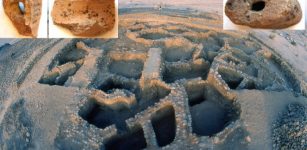 Magnetic Field From 9,000 Years Ago Teach Us About The Magnetic Field Today
Archaeology | Aug 17, 2021
Magnetic Field From 9,000 Years Ago Teach Us About The Magnetic Field Today
Archaeology | Aug 17, 2021 -
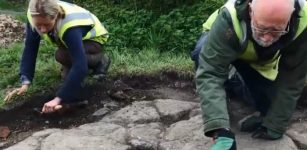 Uncovering 16th Century Scottish Royal Dockyards Used By King James IV’s Navy
Archaeology | May 24, 2018
Uncovering 16th Century Scottish Royal Dockyards Used By King James IV’s Navy
Archaeology | May 24, 2018 -
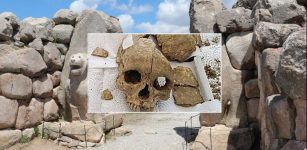 3,500-Year-Old Skull And Thighbone Discovered In Sapinuwa Antique City Of Central Anatolia
Archaeology | Dec 3, 2019
3,500-Year-Old Skull And Thighbone Discovered In Sapinuwa Antique City Of Central Anatolia
Archaeology | Dec 3, 2019 -
 On This Day In History: Mount Tambora Volcano Begins A Three-Month-Long Eruption – On Apr 10, 1815
News | Apr 10, 2017
On This Day In History: Mount Tambora Volcano Begins A Three-Month-Long Eruption – On Apr 10, 1815
News | Apr 10, 2017 -
 Rare Preserved Written Account Of North America’s Ancient Lost Civilization Of Tall Beings From An Unknown Land
Featured Stories | Aug 25, 2024
Rare Preserved Written Account Of North America’s Ancient Lost Civilization Of Tall Beings From An Unknown Land
Featured Stories | Aug 25, 2024 -
 5 Myths About The Amazons – Ancient Female Warriors
Featured Stories | Jan 13, 2016
5 Myths About The Amazons – Ancient Female Warriors
Featured Stories | Jan 13, 2016 -
 Women’s March On Versailles: One Of The Most Significant Events Of The French Revolution
Ancient History Facts | Oct 11, 2018
Women’s March On Versailles: One Of The Most Significant Events Of The French Revolution
Ancient History Facts | Oct 11, 2018 -
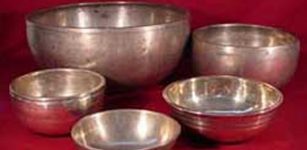 Sound Healing And Crystal Therapy, Ancient Arts Being Practiced Today – What Does Science Say?
Featured Stories | Mar 25, 2017
Sound Healing And Crystal Therapy, Ancient Arts Being Practiced Today – What Does Science Say?
Featured Stories | Mar 25, 2017 -
 Basajaun: Giant Blacksmith, ‘Lord Of The Woods’ And How People Learned Secrets Of Agriculture
Featured Stories | Aug 27, 2020
Basajaun: Giant Blacksmith, ‘Lord Of The Woods’ And How People Learned Secrets Of Agriculture
Featured Stories | Aug 27, 2020 -
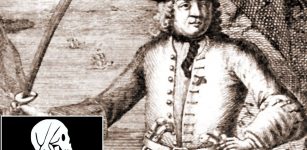 Jolly Roger – Symbol Of Golden Age Piracy
Ancient History Facts | Jan 22, 2017
Jolly Roger – Symbol Of Golden Age Piracy
Ancient History Facts | Jan 22, 2017 -
 On This Day In History: Battle Of Sinop Took Place – On Nov 30, 1853
News | Nov 29, 2016
On This Day In History: Battle Of Sinop Took Place – On Nov 30, 1853
News | Nov 29, 2016 -
 Ancient Indigenous Carvings On Boab Trees – Time To Rescue Ancient Art Before Trees Disappear
Archaeology | Oct 12, 2022
Ancient Indigenous Carvings On Boab Trees – Time To Rescue Ancient Art Before Trees Disappear
Archaeology | Oct 12, 2022 -
 Incamisana Water Temple At Ollantaytambo, Peru: Marvelous Engineering Masterpiece Of Inca
Ancient Technology | Jul 19, 2019
Incamisana Water Temple At Ollantaytambo, Peru: Marvelous Engineering Masterpiece Of Inca
Ancient Technology | Jul 19, 2019 -
 Sacrificial Remains From The Iron Age Unearthed Near Aarhus, Denmark
Archaeology | Oct 14, 2015
Sacrificial Remains From The Iron Age Unearthed Near Aarhus, Denmark
Archaeology | Oct 14, 2015 -
 Sobek: A 2,500-Year-Old Mummified Nile Crocodile – On Display At The British Museum
Archaeology | Dec 9, 2015
Sobek: A 2,500-Year-Old Mummified Nile Crocodile – On Display At The British Museum
Archaeology | Dec 9, 2015 -
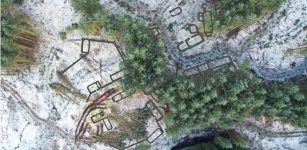 Ruins Of Post-Medieval Brunell Township Discovered In Glen Brittle Forest On The Isle of Skye
Archaeology | Feb 29, 2024
Ruins Of Post-Medieval Brunell Township Discovered In Glen Brittle Forest On The Isle of Skye
Archaeology | Feb 29, 2024 -
 On This Day In History: Coverdale Bible Printed In English For The First Time – On Oct 4, 1535
News | Oct 4, 2016
On This Day In History: Coverdale Bible Printed In English For The First Time – On Oct 4, 1535
News | Oct 4, 2016 -
 2,000-Year-Old Roman Sandal With Nails Found In Germany
Archaeology | Jun 28, 2024
2,000-Year-Old Roman Sandal With Nails Found In Germany
Archaeology | Jun 28, 2024 -
 When Did Humans First Start To Speak?
Featured Stories | Dec 12, 2022
When Did Humans First Start To Speak?
Featured Stories | Dec 12, 2022 -
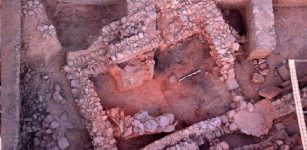 Exciting discoveries made by archaeologists in Laconia
News | Aug 25, 2015
Exciting discoveries made by archaeologists in Laconia
News | Aug 25, 2015


